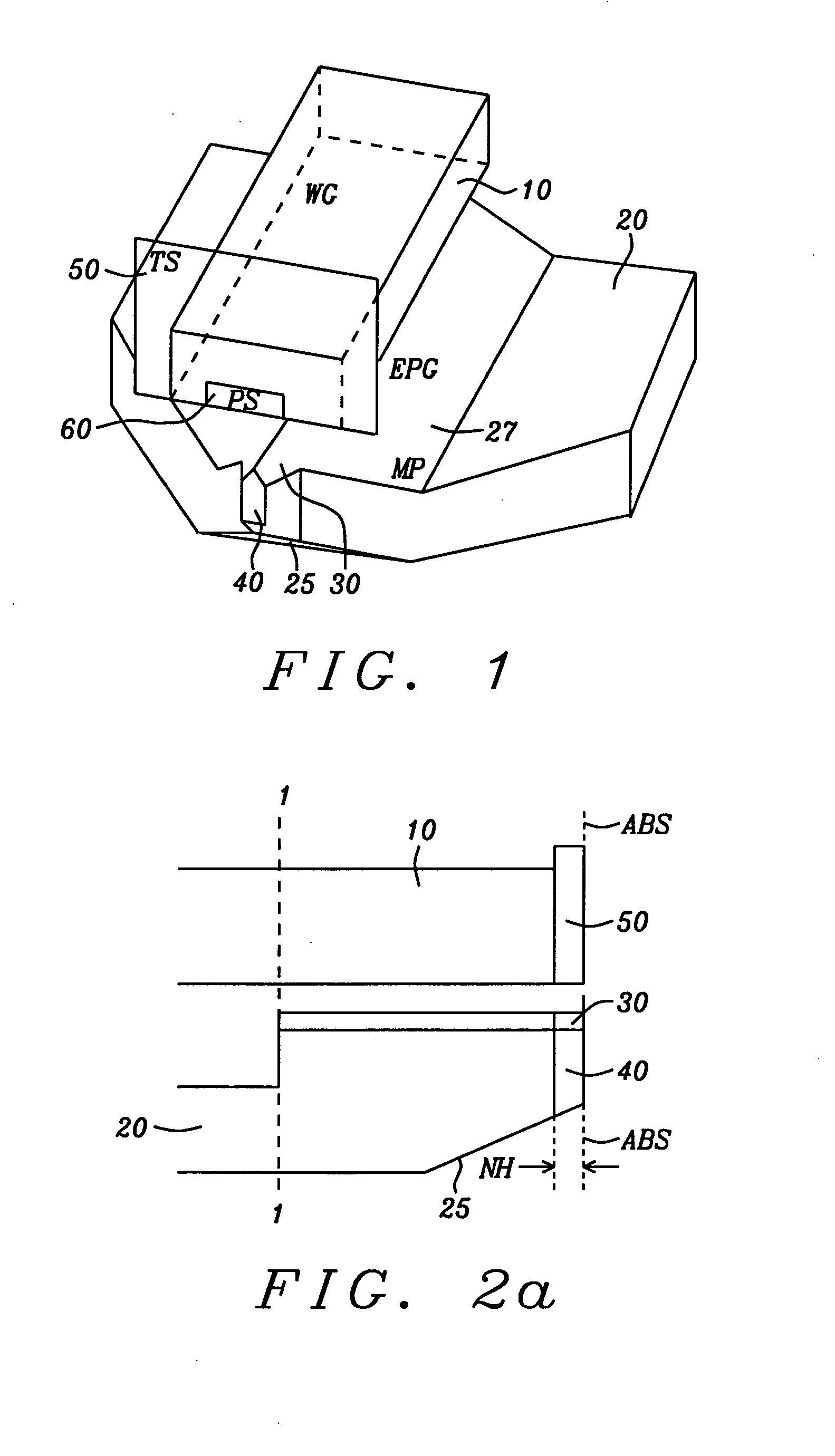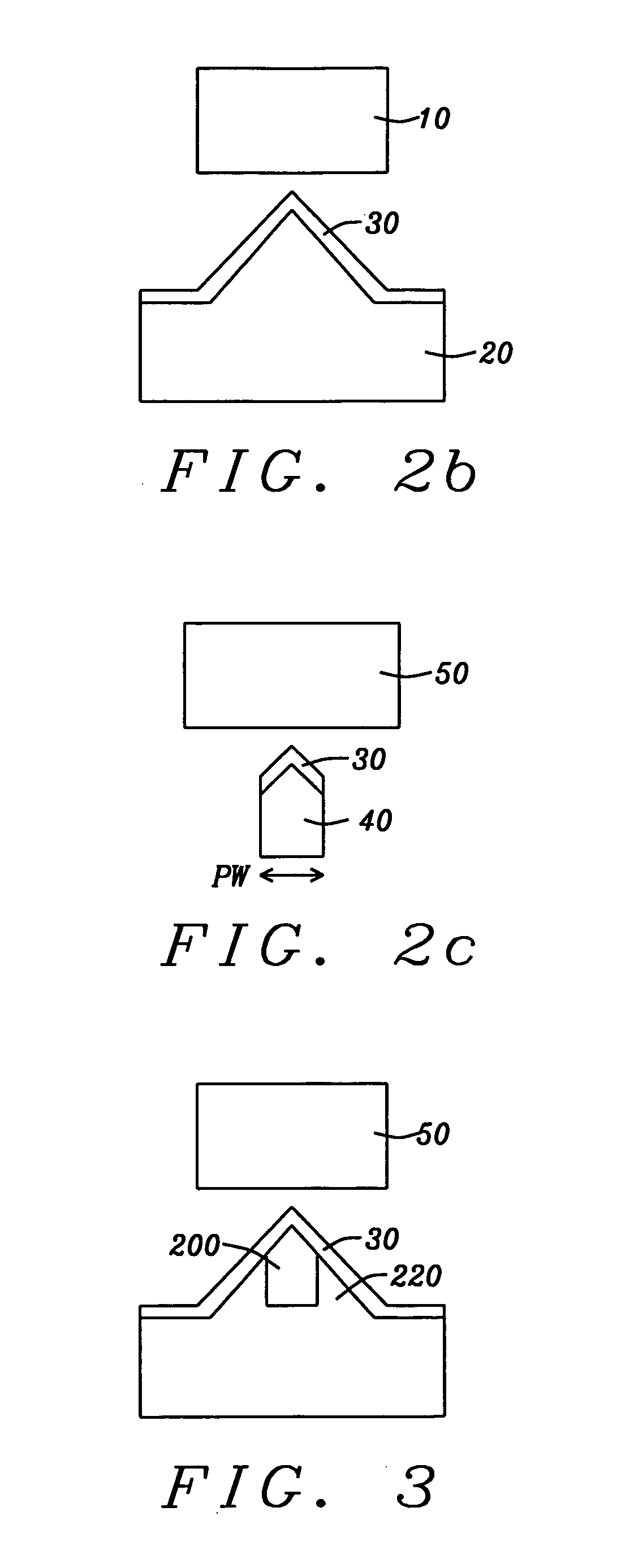Heat assisted narrow pole design with trailing shield
- Summary
- Abstract
- Description
- Claims
- Application Information
AI Technical Summary
Benefits of technology
Problems solved by technology
Method used
Image
Examples
first embodiment
[0035]Referring to schematic FIG. 1, there is shown a 3-dimensional view of the heat-assisted magnetic write pole with a narrow pole tip design of the present invention. An optical waveguide, WG, (10) is positioned adjacent to (and separated from) the trailing edge side of the main pole (MP) (20). The shape of the MP (20) shows an upward sloped leading edge taper (25) and downward sloped side tapers (27). An edge plasmon generator (EPG) (30) is formed as a conducting layer conformally covering a substantial portion of the trailing edge of the MP, which can here be considered as extending over the side tapers (27). Note also that although the EPG has a thickness between approximately 5 nm and 80 nm, the thickness is not shown in this perspective drawing.
[0036]The region of coverage by the EPG, which includes coverage over the symmetric sides (27) of the MP and over the entire trailing edge surface of the narrow pole tip (40), overlaps with, but is separated from, a portion of the WG ...
second embodiment
[0043]Referring to schematic FIG. 3, there is shown an alternative structure that forms a second embodiment of the invention. In this design, the magnetic pole is still tapered down to a narrow tip (200) of magnetic material at the ABS, but the EPG layer (30) retains the same cross-sectional dimension from the back end of the pole where it commences (i.e., as is shown in FIG. 2(b) for the first embodiment), to the ABS end (which is shown here in FIG. 3). The trailing shield (50) is shown above the pole tip. Maintaining the dimensions of the EPG layer is accomplished by filling the region around the etched pole tip with non-magnetic metals (220), such as Ta, Ti, Ru, Cr or any of their composites, to provide support for the EPG layer. It is to be noted that FIG. 3 is analogous to FIG. 2(c), in that it illustrates the ABS end of the pole in this second embodiment, just as FIG. 2(c) illustrates the ABS of the pole in the first embodiment. Superficially, FIG. 3 may look like FIG. 2(b), w...
PUM
 Login to View More
Login to View More Abstract
Description
Claims
Application Information
 Login to View More
Login to View More - R&D
- Intellectual Property
- Life Sciences
- Materials
- Tech Scout
- Unparalleled Data Quality
- Higher Quality Content
- 60% Fewer Hallucinations
Browse by: Latest US Patents, China's latest patents, Technical Efficacy Thesaurus, Application Domain, Technology Topic, Popular Technical Reports.
© 2025 PatSnap. All rights reserved.Legal|Privacy policy|Modern Slavery Act Transparency Statement|Sitemap|About US| Contact US: help@patsnap.com



